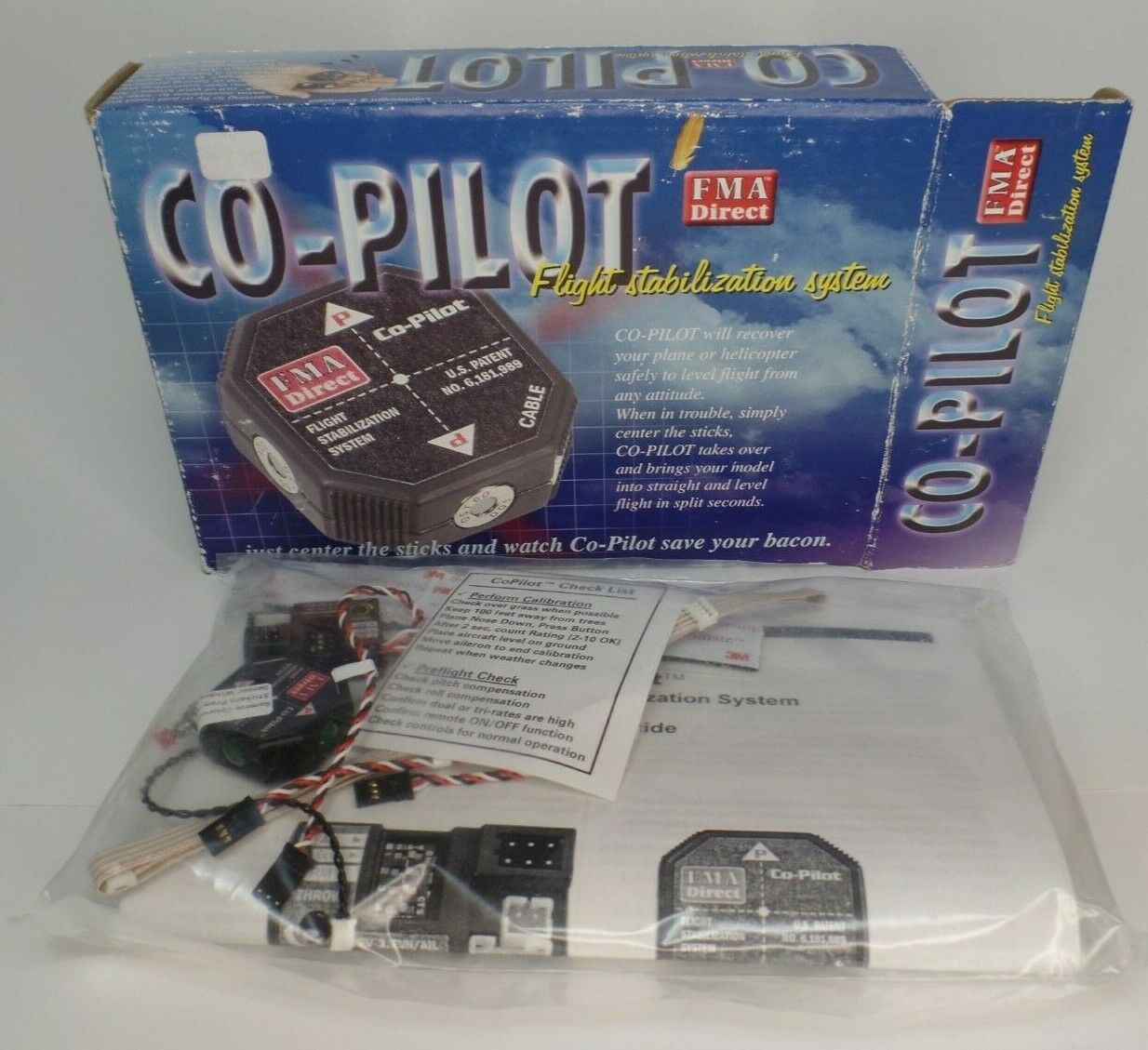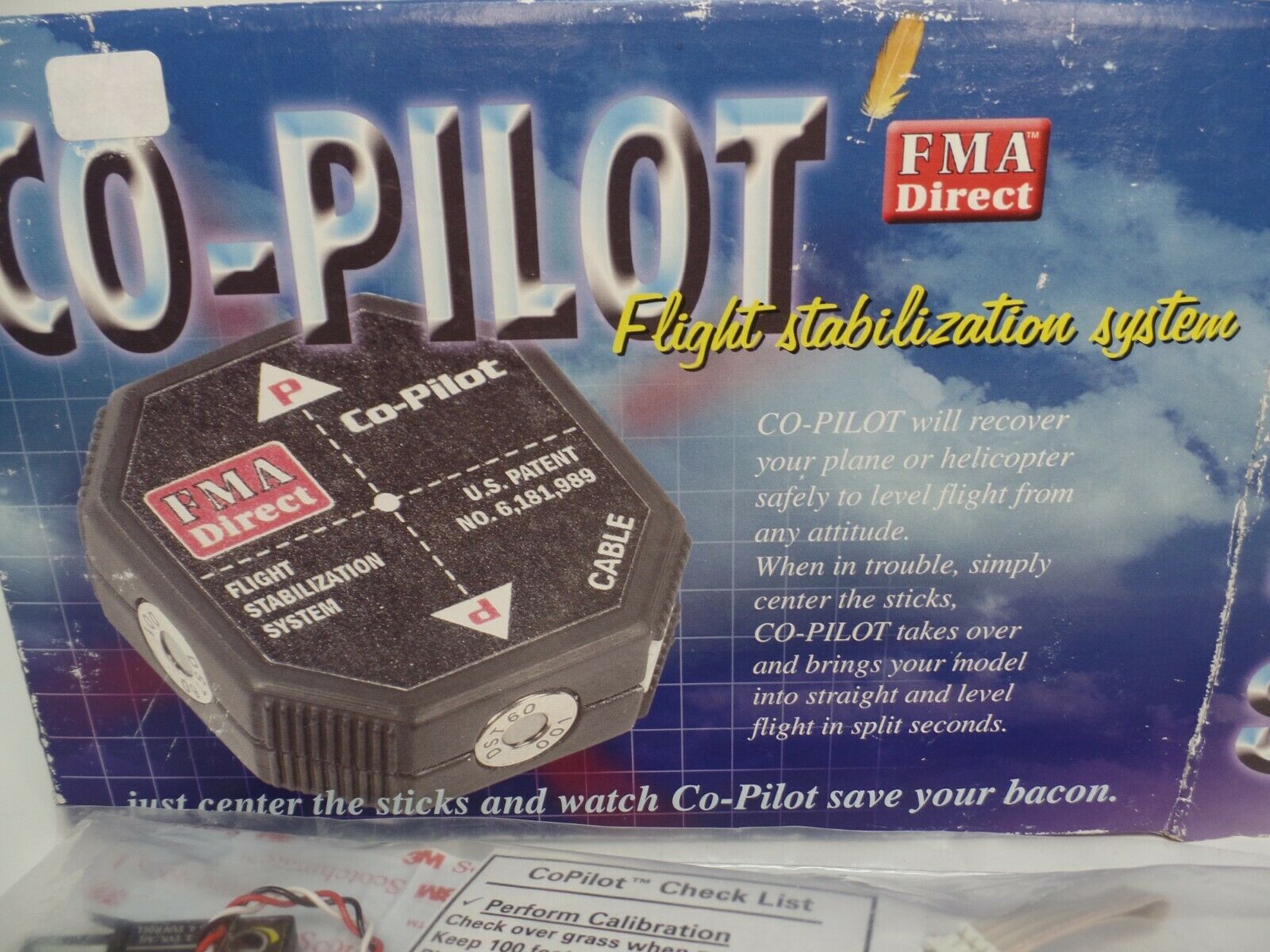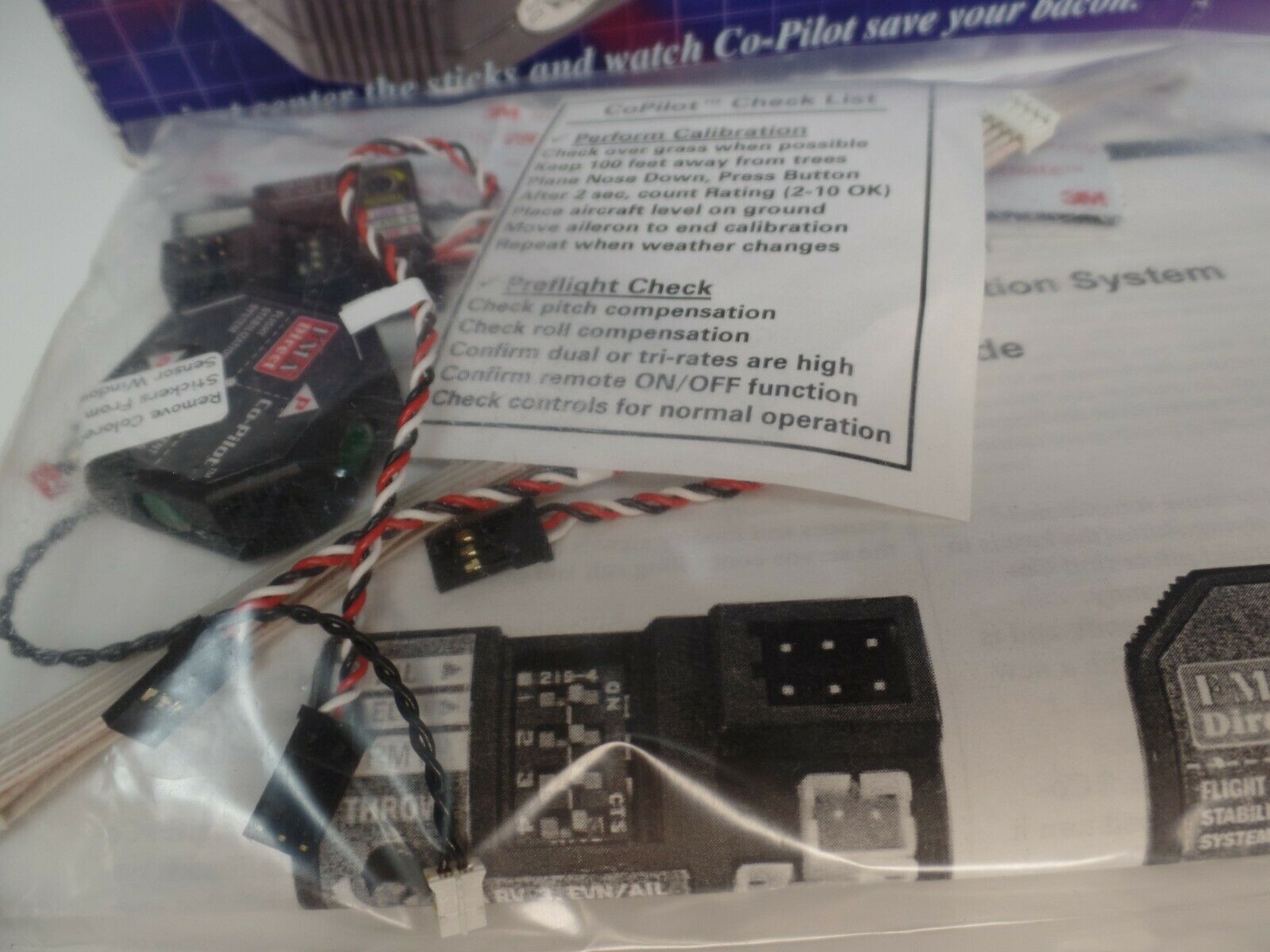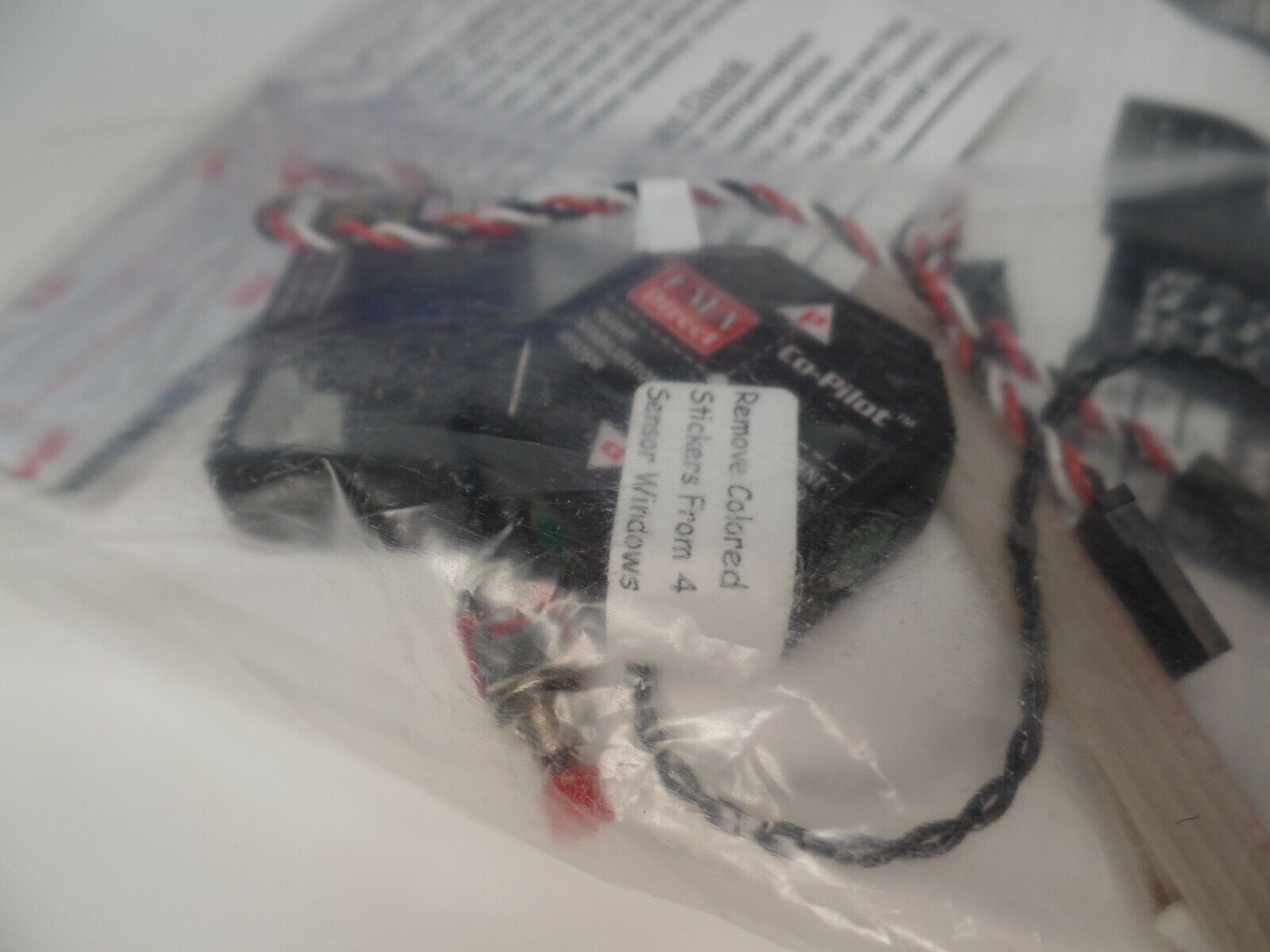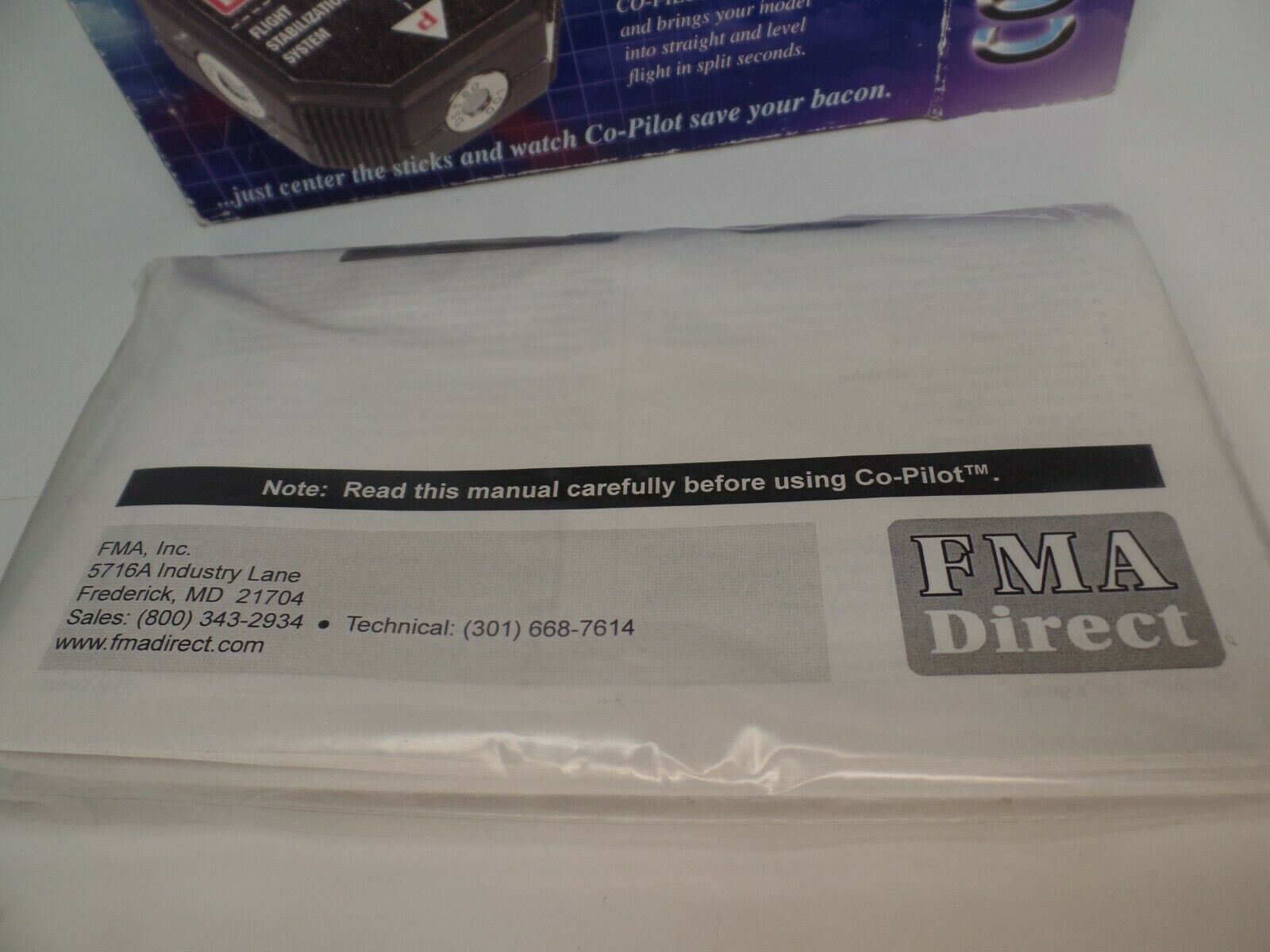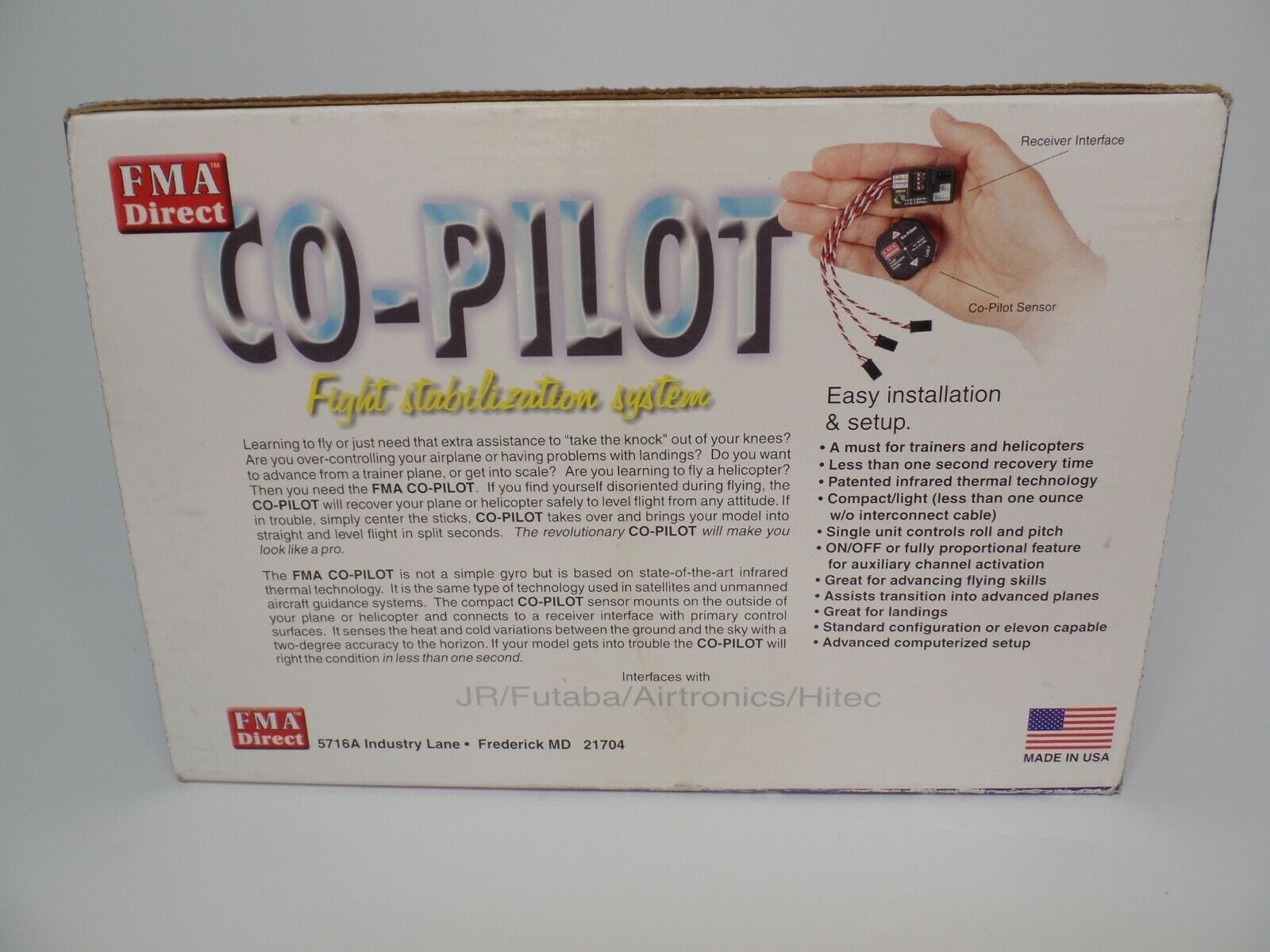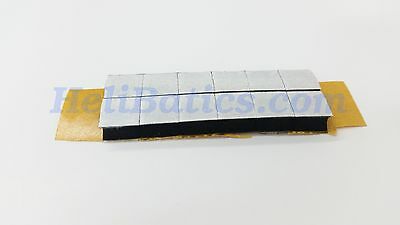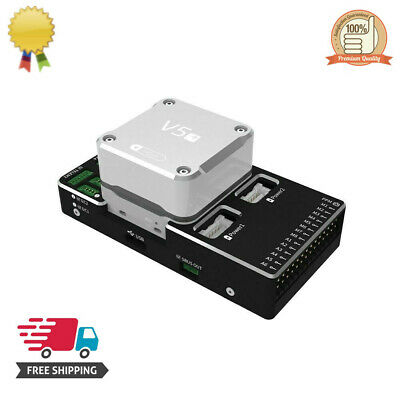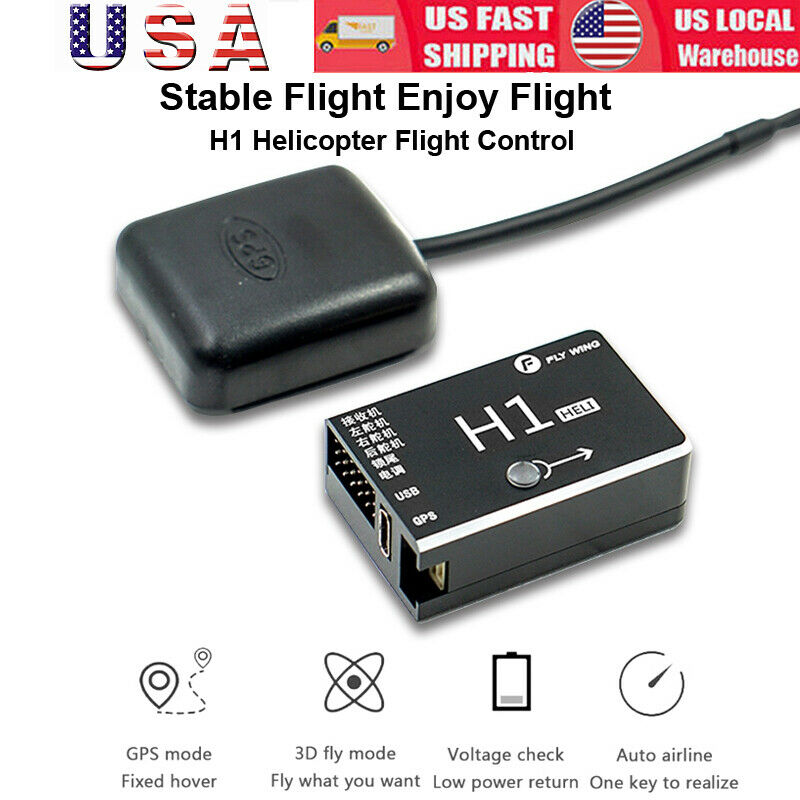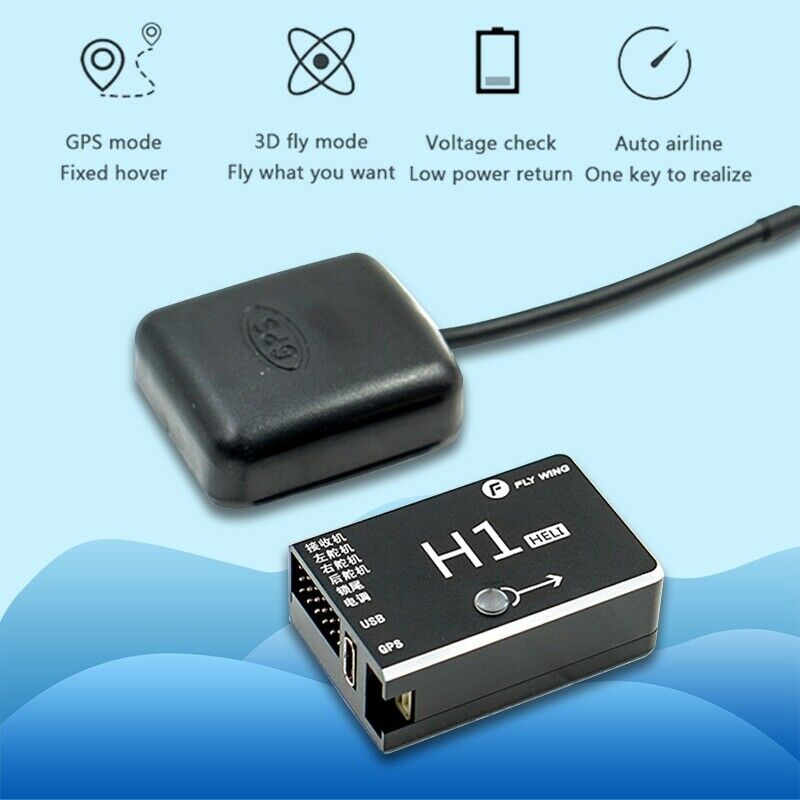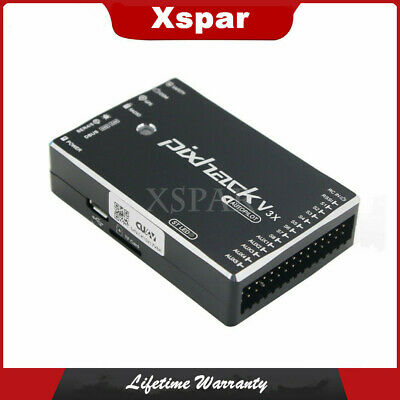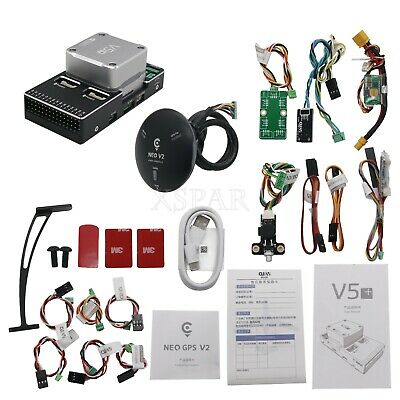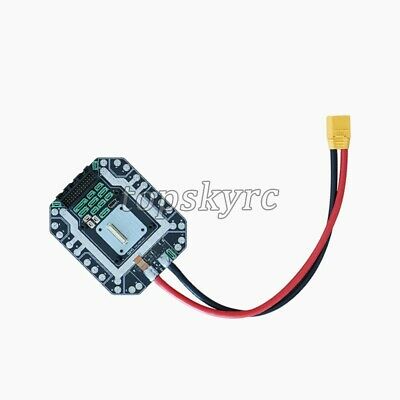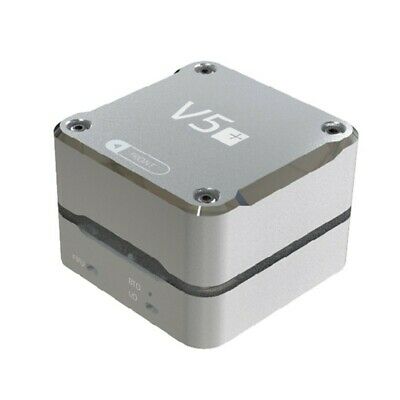-40%
NOS FMA Direct Co-Pilot CPD4 2 Channel Flight Stabilization System New Old Stock
$ 30.09
- Description
- Size Guide
Description
Here we have aNOS FMA Direct Co-Pilot CPD4 2 Channel Flight Stabilization System New Old Stock
I have copied and pasted below the write up and specs below
Utilizes Patented IR Technology to detect the temperature difference between the earth and the sky allowing a model aircraft to stabilized about the pitch and roll axes to attain a level flight attitude by simply centering the transmitter control stick(s)
Capable of recovering a model from any attitude to level flight in less than 1 second
IR thermopile sensors see several square miles of area. The average profile means relatively small objects such as a clump or trees or a house have little impact on Co Pilot operation
Fantastic training tool for new pilots
Can be enabled/disabled by remote auxiliary control; a proportional knob or slider for reducing Co Pilot sensitivity, or a 2 position switch to be used as a "panic" or "bailout" switch
Operates on any R/C aircraft configuration requiring no more than 2 radio channels to control pitch and roll attitude
10's of thousands of units sold to happy customers around the world
Small, light, and simple to install. Total system weight including main sensor, computer module, and programming switch weigh less than 1 oz.
Affordable - Co Pilot CPD4 will easily pay for itself on the first potential crash it averts
Creates a proven, low-stress environment for learning to fly R/C aircraft of all types
Excellent tool for the advanced pilot who wishes to practice new maneuvers or move up to larger, more powerful aircraft
Operates with any brand, type, or frequency radio system
CPD4 is for outdoor use only, but will operate properly in most weather conditions. Exceptions would be during periods of precipitation or heavy overcast conditions
Supports daily, manual field calibration that checks the area for level conditions and perfoms a weather quality check. Weather condition is reported to the pilot using a series of (1 to 10) servo control pulses. Pilot may elect to fly using Co Pilot if the count is greater than 1.
Other Features
Comprehensive User Manual available for download includes detailed installation and setup instructions for fixed wing, helicopters, and flying wing aircraft types
System includes everything required in one box - main sensor, computer, flat-ribbon interconnect cable, programming switch, mounting accessories*
Sensitivity control allows for pilots to strike a good balance between recovery speed and the amount of control Co Pilot has over the aircraft
The original Co Pilot (PN CPD4) is a patented, 2 channel, 2 axis Flight Stabilization System (FSU) that senses the difference in infrared signature (temperature) between the earth and the carbon dioxide in the atmosphere to provide 100% real time, day or night stabilization about two axes (pitch and roll) on virtually any model. The system maintains level flight for aircraft and heli requiring only 2 radio channels to control pitch and roll. This limitation means CPD4 does not handle CCPM helicopters or aircraft configurations that include differential ailerons or flapperons. If your model requires 3 or 4 radio channels to control pitch and roll, click here to learn about the new Co Pilot II FSU.
How does Co Pilot work?
The Co Pilot CPD4 is composed of two main components; the sensor module and the computer module. The sensor module must be mounted to the outside of the aircraft and plugs in to the computer module. The computer module is installed between any R/C receiver and the servos controlling the aircraft's pitch and roll flight surfaces. The sensor module contains 4 independent IR thermopile sensors. The sensors are mounted 90 degrees apart and look out in all directions toward the horizon. The viewing angle of each sensor would be represented by a 90 degree cone. Each sensor is capable of seeing several square miles of area taking a wide angle view of the "composite" or "average" surrounding temperature profile. Objects with comparably small temperature profile such as a grove of trees or a house blend in to the overall IR picture. The overall effect of the IR readings tend to give the impression that Co Pilot is picking up on the horizon. So we might say Co Pilot can level the aircraft to within 1 degree of the horizon, but the reality is that sensor range is probably less than 1 mile. Therefore, it does not really "see" the horizon. It sees the average temperature profile all around and inside of 1 mile to determine level attitude relative to the sensor module installation. By comparing the relative heat signature measured by each cone, the CPD4 computer utilizes the raw analog signals from the sensor module to alter the radio receiver's control pulses to the servos. In essence, the CPD4 is always attempting to maintain the aircraft in a level attitude by balancing out the heat signature all around the aircraft. The pilot is therefore "over-riding" the Co Pilot's natural tendency when he flies.
The amount of control the Co Pilot has over the aircraft may be adjusted by the sensitivity setting on the computer module, or at the customer's transmitter using a proportional auxiliary control such as a knob or slider. Alternatively, the CPD4 Remote can be set up on a 2 position auxiliary switch. In this scenario, Co Pilot may be used as a "panic" or "bail out" device in the event the pilot loses orientation or gets into an otherwise tight situation. For fastest recovery, the computer senstivity will be set higher. Co Pilot is capable of returning the model from any attitude to level flight in less than 1 second. This is easily accomplished by simply centering the right control stick of the transmitter. Depending on a pilot's tastes and experiences, sensitivity may be reduced to strike a good balance between faster recovery time and less control over the pilot's commands.
The Co Pilot CPD4 has been available to the R/C industry since the early 2000's. 10's of thousands of units have been sold to customers around the world who are still "amazed" at how well it works. You have to see it to believe it! We receive thanks and praise routinely for all of our flight stabilization technologies because they help enrich the experience of modeling. By our estimate, this technology has revolutionized the training of R/C pilots for airplanes, helicopters, and gliders. Best of all, it's affordable. It will pay for itself the first time it helps a pilot to avoid a crash. While no FSU currently available can replace the knowledge of an experienced tutor, and no FSU in this price range can ever fly the model for the pilot, the Co Pilot provides a much lower stress environment for the new pilot or the experienced pilot seeking to learn new aerobatic manuevers or move up to a larger, faster aircraft. Imagine the comfort level any pilot feels knowing that he has a panic button at his finger tips. The end result is that the pilot spends more time in the air, and less time and money on repairs.
Tell me more about using Co Pilot as a flight instruction tool
The transmitter sticks can be used normally to command the model through any maneuver of which it is capable, yet, the moment the sticks are centered, the model immediately rights itself, even from inverted flight. Buddy boxes are no longer needed as Co Pilot has proven to be the most effective way possible to train new flyers and to assist all flyers. The instructor no longer needs a transmitter. Persons who have never flown a model are becoming competent to fly complete flights, including unassisted landing within just as few flights. The task of flight instructor is reduced to the simple, quiet reminder to the pilot, "center the sticks" when he makes an error that might normally crash the model. Landings are instructed by directing him to "line it up with the runway" then to "throttle back". Co Pilot holds the wings and nose level and the model descends to land nearly automatically. Co Pilot-equipped Helicopters are fully capable of maintaining hands-off hover in low or no wind situations. Even if there are strong winds present, Co-Pilot will keep a helicopter in level hover. The heli will usually drift in the direction of its intertia, but the fact that the blades stay level allow the pilot time to think and time to react. The fact that sensitivity is adjustable by the pilot means that as a new pilot builds confidence and actually learns how to control his model, he can back off Co Pilot control and enjoy a more realistic flying experience. The sailplane pilot can seek a thermal, set rudder for a circling, flat turn, and Co Pilot will hold the wings and the nose level to keep it in the thermal. The unit is small and light enough for use in slow/park flyers.
More about setup and installation
FMA Direct and Revolectrix recommend that any model on which Co Pilot is to be installed be in good flying condition and that all radio, engine, and mechanical aspects of the model have been proven out during at least one maiden flight. The Co Pilot reference manual is comprehensive and walks through the various steps for installing the Co Pilot on various model types; fixed wing aircraft, helicopters, and flying wings. "Programming" the CPD4 is accomplished by properly setting a series of small dip switches on the computer module. These settings are required to tell the computer about how the main sensor is oriented on the model, whether or not the model is set up for elevons, etc. Co Pilot includes an interactive pre-flight setup process to check weather conditions and adjust the unit for optimum performance. Manual daily field calibration is required one time per day or whenever weather conditions change radically. Field calibration requires about 30 seconds to complete. The sensor module may be located anywhere on the outside of the model where it can "see" the horizon in all directions, except in the exhaust stream where oil might deposit on the sensor windows. The computer module mounts inside of the aircraft. The computer module and sensor unit must be interconnected using the supplied, 4-position flat ribbon cable. The system contents also include a single push-button programming switch and hook and loop fasteners for mounting the components.
Please note: Co Pilot CPD4 will operate with any brand, type, or frequency radio system including 2.4 GHz systems. In certain cases, it may cause servo jitter or "hunting" when used in combination with very-high-speed digital servos. When interfacing Co Pilot CPD4 to a PCM or certain 2.4 GHz radio systems, the 605SB Servo Buffer is usually required. Instructions for how to install the 605SB in a CPD4 installation are detailed in the CPD4 User Manual. This additional device is required for any radio system that outputs servo pulses in parallel; meaning the timing of each of the PPM outputs to the servos are not staggered. All Futaba PCM radios work this way. The 605SB creates a slight delay so that the pitch and roll servo outputs do not reach the CPD4 computer at precisely the same time.
Size:
CPD4 Computer Module (LxWxH): 1.50" x 0.89" x 0.60"
CPD4 Sensor (LxWxH): 1.35" (octagonal) by 0.53" thick
System Weight:
less than 1 oz. (28 gm)
Ratings:
System will operate on normal R/C voltage range of approximately 3.5v to 6v
Power Source:
System is powered from your radio's receiver
Power Consumption:
5 mA, but be aware that during stabilization, servo current draw may be increased above "normal" levels
Inputs:
Aileron (or rudder), Elevator, and AUX for Remote; remote may be a proportional knob or slider, or a 2 position switch for ON/OFF
Thank you for looking
Photos shown in this listing are of the actual item for sale.
NO STOCK PHOTOS USED unless otherwise stated.
Please have a look at the pictures for the cosmetic condition. Please realize when buying antique, vintage or used equipment that they cannot be in an absolute mint or absolute perfect condition, they might need some service, now or later. I take lots of pictures so you can see cosmetics. Use the zoom function and have a good look. It is impossible to describe every scratch, scuff or mark. So take a good look. That is what they are there for. We check and describe the as much of the functionality as we can. If not Fully tested , then items are not tested to the full extent and may have something wrong that I have not discovered. If Fully tested then that is what they are. Fully working.
In photographs we occasionally use props to display items in the best light possible. These props, like my white board, lighting ,My Beautiful Wife (she is occasionally caught in the photos), kitchen table, Train track, boxes, my left or right hand are not including unless otherwise stated in the listing. ( Sorry for you having to read this but you would be surprised how many people think the items come with my table or a part of my anatomy and/or my Wife's legs that I have accidentally caught on camera.) Take it from me.... My Wife is not for sale and no amount of money would replace her, though if you offer enough I may include my one of my hands as this would get me out of doing some work. :o)
In the first few lines you will see what you are bidding on, i.e... “This auction is for a ?????????? " If it does not say base, stand , table , in either the main body of the description or title ... then they are NOT included in the sale.
All our items, including changeable parts like bulbs, Vacuum Tubes, circuit boards, internal parts etc. are security marked. If you return an item these security marks are checked before refunds are given. I am sorry for having even to do this , but there are those out there that think it is clever to swap and change parts and return us a faulty item. We have them hidden throughout our items, including internal parts. These are there so we can identify if items have been removed, changed or tampered with when they are returned.
VACUUM TUBE TESTING
I do not Sell Just Passable Vacuum Tubes. All tubes purchased have loads of life left in them. Low and weak tubes are unceremoniously thrown in the nearest trash can, unless they are collectors Items.
When using the word “Matched” it means in test results rather than in cosmetic looks. Whilst I endeavor to put tubes together from the same year and look the same, this is not always the case. I may have the same tube but from differing years matched up in test results, which means they may cosmetically or internally look a little different...
The numbers/letters in parentheses are Equivalents put in to help people to find the correct tube.
If it does not say MATCHED then please do not consider them to be such.
I use a TV7/U military spec Tester which is calibrated . I have 4 of these machines and all display a slightly differing value if I test the same tube, as two testers are never the same. So this shows what I get, and what you get may be slightly different. So all test results are a guide only.
I also use a Hickok 752 /800/600 or Amplitrex AT1000 for testing
All tubes have passed the Gas and short tests.
Rectifiers and Diode tubes do not have Transconductance values.
IF YOU'RE UNHAPPY WITH AN ITEM ...
Contact us via messaging.
I am human... I make mistakes once in a while. I Run this store on eBay. I am not a huge retail outlet.
I try to resolve any issue to both our best interests.
MAILING
I Try to Mail out within 24 hours of your payment. Where I live the Post office is closed on a Saturday, so Purchases paid for on a Friday will go out on Monday as I work Fridays and do not get home until after the PO is closed.
RETURNS
I accept returns unless stated otherwise in the description.
We insure everything, and we have to pay for this insurance. I also pack well. If you still receive an item that has been damaged please let us know so we can start an insurance claim. Take pleanty of pictures and send them to us as this helps alot.
I may ask you to return or keep the item whilst the insurance goes though. If I ask you to return it then I will refund you in full once it is returned.. If I ask you to keep the item , then you will be refunded once the insurance goes through.
I think it is only fair to ask the carrier responsible for the damage to pay for it. Please be patient enough for this process.
DISCLAIMER/WAIVER OF LIABILITY
Regardless of the origin of the equipment, documentation provided or identification appearing upon the equipment, the equipment described and offered here is in no way certified for, recommended for, or offered for any specific use. The purchaser agrees that the seller shall not be held responsible or liable for any injuries or damages, whether incidental or consequential, associated in any way with the equipment. The purchaser, by bidding on this equipment, indicates their acknowledgment of, and agreement to the terms of this disclaimer.
International Buyers – Please Note:
Import duties, taxes, and charges are not included in the item price or
shipping cost. These charges are the buyer's responsibility.
For more information regarding taxes, etc. for some countries please check you local countries Web site. Most have one.
•These charges are normally collected by the delivering freight (shipping) company or when you pick the item up – do not confuse them for additional shipping charges.”
•We do not mark merchandise values below value or mark items as ‘gifts’ , 'demos', etc. - US and International government regulations prohibit such behavior. PLEASE DO NOT ASK
Please check with your country's customs office to determine what these
Additional costs will be prior to bidding or buying.
